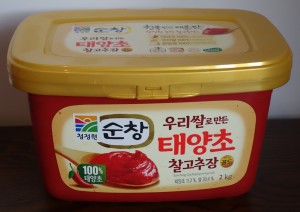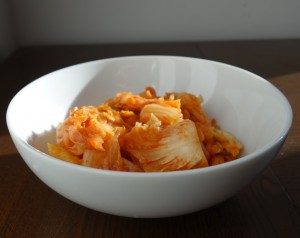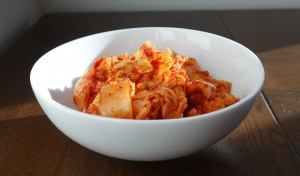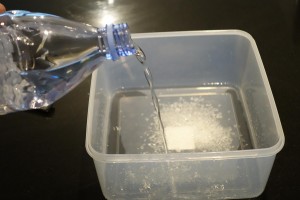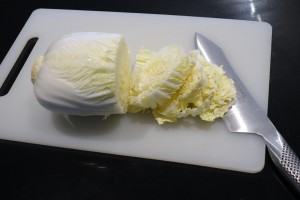Last month I made kimchee using guchujang. I was surprised by how good it tasted and wanted to compare it to kimchee made the traditional way. I made up two batches simultaneously, following my traditional kimchee recipe. The only difference being that one was made with two tablespoons of kochukaru; the other with two tablespoons of guchujang.
After mixing the wilted cabbage with the other ingredients it was immediately obvious that the guchujang kimchee contained more liquid. The one made with kochukaru was much drier, but also a more vibrant colour.
The photos below were taken just a few minutes after compressing the mixtures into a fermentation jar:
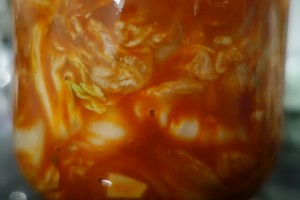

After three weeks I removed the kimchees from their fermentation jars and compared them.
They smelt and tasted almost identical – in a blind taste test I failed to tell them apart. The only difference was their appearance. The Kimchee made with guchujang was much paler, with a almost uniform dull orange colour. The kimchee made with kochukaru was a visual delight! The bright red against the green of the cabbage made it look much more appealing.


Conclusion
If you’re simply after great tasting kimchee it doesn’t matter which recipe you follow, but if you’d like the finished dish to look as good as it tastes I recommend preparing it with kochukaru.

